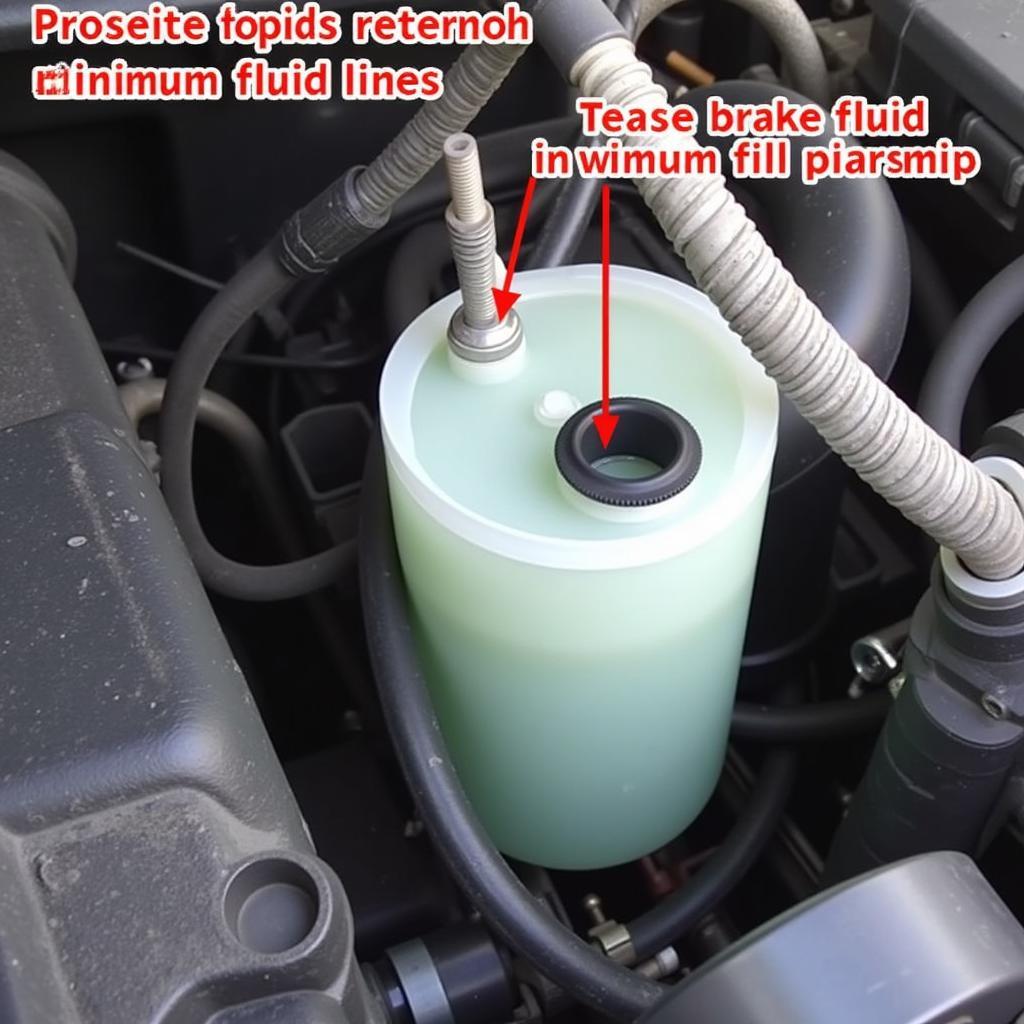The dreaded brake warning light on your 2014 Ford E-350 Super Duty can be a source of anxiety. Understanding why this light illuminates and how to address the underlying issue is crucial for your safety and the longevity of your vehicle. This guide will walk you through the common causes, diagnostic procedures, and potential solutions for a 2014 Ford E-350 Super Duty brake warning light.
Understanding Your E-350’s Brake System
The brake system in your 2014 Ford E-350 Super Duty is a complex network of components working together to ensure safe and effective stopping power. From the brake pedal to the brake calipers, each part plays a vital role. A malfunction in any of these components can trigger the brake warning light.
Common Causes of the Brake Warning Light
Why is my 2014 Ford E-350 Super Duty brake warning light on? Several factors can contribute to this, including:
- Low Brake Fluid: This is the most common culprit. A leak in the brake lines, worn brake pads, or a faulty master cylinder can cause low brake fluid levels.
- Worn Brake Pads: Brake pads have wear indicators that trigger the warning light when they reach a certain thickness.
- Faulty Brake Sensor: A malfunctioning sensor can incorrectly signal a problem, even if everything is functioning correctly.
- Parking Brake Engaged: Sometimes, the simplest explanation is the correct one. Ensure the parking brake is fully released.
- ABS Issues: Problems with the Anti-lock Braking System (ABS) can also trigger the warning light. This often requires specialized diagnostic tools.
 Checking Brake Fluid Level in 2014 Ford E-350
Checking Brake Fluid Level in 2014 Ford E-350
Diagnosing the Problem
Diagnosing the issue accurately is the first step towards a solution.
Checking the Brake Fluid
Start by checking the brake fluid level in the master cylinder reservoir. If the fluid is low, top it off and check for leaks. Persistent low fluid indicates a leak that requires professional attention.
Inspecting the Brake Pads
Visually inspect the brake pads through the wheel spokes. If they appear thin or worn down to the metal backing plate, replacement is necessary.
Using Diagnostic Tools
For more complex issues like ABS problems or faulty sensors, diagnostic tools are necessary. A professional mechanic can use a code reader to identify the specific fault codes stored in the vehicle’s computer.
“Regular brake inspections are crucial, especially for heavy-duty vehicles like the E-350. Addressing minor issues early can prevent costly repairs down the road.” – John Miller, Certified Automotive Technician.
Solving the Problem: 2014 Ford E-350 Brake Warning Light
Once you’ve identified the cause, the next step is to implement the appropriate solution.
- Adding Brake Fluid: If the fluid is low, add the correct type of brake fluid recommended by Ford.
- Replacing Brake Pads: Worn brake pads require replacement. This can be done by a DIYer with the right tools and experience, or by a professional mechanic.
- Repairing Leaks: Brake line leaks require immediate attention. A qualified mechanic should inspect and repair any leaks in the brake system.
- Replacing Sensors: Faulty brake sensors need to be replaced. This usually involves removing the wheel and accessing the sensor.
- Addressing ABS Issues: ABS problems are often complex and require specialized diagnostic tools and expertise. Consult a qualified mechanic for ABS-related issues.
“Ignoring a brake warning light can lead to serious safety hazards. Prompt diagnosis and repair are essential for maintaining optimal braking performance.” – Maria Sanchez, Automotive Safety Expert.
Conclusion
The 2014 Ford E-350 Super Duty brake warning light is a crucial safety indicator. Addressing the underlying issue promptly is vital for your safety and the proper functioning of your vehicle. By understanding the potential causes and following the diagnostic steps outlined above, you can ensure your E-350’s brakes are in top condition. Don’t hesitate to consult a qualified mechanic if you’re unsure about any aspect of the diagnosis or repair process. A properly functioning brake system is paramount for a safe driving experience in your 2014 Ford E-350 Super Duty.
FAQ:
- How often should I check my brake fluid?
- Can I drive my E-350 with the brake warning light on?
- How much does it cost to replace brake pads on a 2014 Ford E-350 Super Duty?
- What are the symptoms of a failing ABS system?
- How can I find a qualified mechanic to diagnose my brake warning light?
- Can I replace a brake sensor myself?
- What type of brake fluid should I use in my 2014 Ford E-350 Super Duty?
